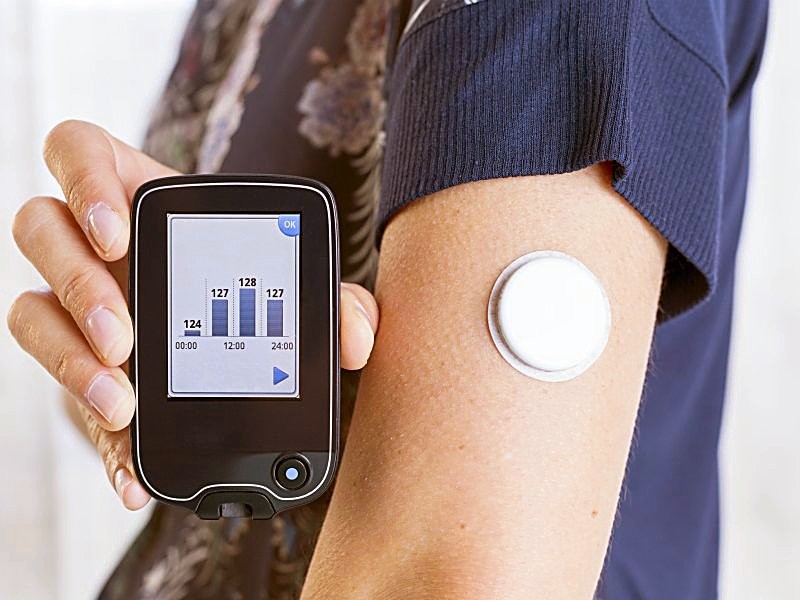In today’s fast-paced world, managing health effectively is paramount. For individuals with diabetes, continuous monitoring of glucose levels is essential. Fortunately, advancements in CGM technology have led to the development of innovative glucose monitoring devices that are reshaping the landscape of healthcare. This article delves into the intricacies of glucose monitoring technology, highlighting its benefits and impact on individuals’ lives.
Understanding Glucose Monitoring Technology
CGM technology encompasses a range of devices designed to measure blood sugar levels accurately and conveniently. Traditional methods, such as fingerstick testing, have evolved into more sophisticated systems, including continuous glucose monitoring (CGM) devices and flash glucose monitoring systems.
Continuous Glucose Monitoring: CGM Technology
CGM systems offer real-time monitoring of glucose levels, providing users with valuable insights into their blood sugar fluctuations throughout the day. These devices use a tiny sensor that is injected beneath the skin to monitor the interstitial fluid’s glucose levels continually. The sensor communicates with a receiver or smartphone app, displaying real-time data and trends.
Flash Glucose Monitoring Systems
Flash glucose monitoring systems offer a convenient alternative to traditional CGM devices. Users wear a small sensor on their skin, typically on the upper arm, which measures interstitial glucose levels. Unlike CGM, flash monitoring systems do not provide continuous real-time data. Instead, users scan the sensor with a reader or smartphone to obtain glucose readings and trends.
Read us for more information: Are Continuous Glucose Monitors Favorable in Obesity Management?
Improved Diabetes Management
The integration of CGM technology into diabetes management has revolutionized the way individuals monitor and manage their condition. Real-time access to glucose data allows for proactive adjustments in medication, diet, and lifestyle, leading to better glycemic control and reduced risk of complications.
Understanding Glucose Monitoring Technology
CGM technology encompasses a variety of devices designed to measure blood sugar levels accurately and efficiently. Traditional methods, such as fingerstick testing, have given way to more sophisticated systems, including continuous glucose monitoring (CGM) devices and flash glucose monitoring systems.
Continuous Glucose Monitoring (CGM)
CGM systems provide real-time monitoring of glucose levels, offering users valuable insights into their blood sugar fluctuations throughout the day. These systems consist of a small sensor inserted under the skin, which continuously measures glucose levels in the interstitial fluid. The sensor communicates with a receiver or smartphone app, providing users with real-time data and trends.
Flash Glucose Monitoring Systems
Flash glucose monitoring systems offer a convenient alternative to traditional CGM devices. Users wear a small sensor on their skin, typically on the upper arm, which measures interstitial glucose levels. Unlike CGM, flash monitoring systems do not provide continuous real-time data. Instead, users scan the sensor with a reader or smartphone to obtain glucose readings and trends.
Enhancing Quality of Life
Glucose monitoring technology empowers individuals with diabetes to lead fuller, more active lives. By providing insights into how food, exercise, and other factors impact blood sugar levels, these devices enable users to make informed decisions in real-time. This newfound freedom and flexibility contribute to improved quality of life and greater peace of mind.
Driving Personalized Healthcare
Advancements in glucose monitoring technology have paved the way for personalized healthcare solutions. By analyzing continuous glucose data, healthcare providers can tailor treatment plans to individual needs, optimizing glycemic control and improving long-term health outcomes. This personalized approach empowers patients to take an active role in their care, fostering a collaborative relationship between patients and providers.
Empowering Self-Management
Perhaps the most significant impact of glucose monitoring technology is its ability to empower individuals to take control of their health. With access to real-time glucose data, users can identify patterns, set goals, and track progress over time. This self-management approach fosters a sense of autonomy and empowerment, motivating individuals to make positive lifestyle changes and adhere to their treatment regimen.
Conclusion
CGM technology represents a paradigm shift in diabetes management, offering individuals unprecedented access to real-time glucose data and insights. From continuous glucose monitoring systems to flash monitoring devices, these innovations are transforming healthcare delivery, enhancing quality of life, and empowering individuals to take charge of their health. As technology continues to advance, the future holds even greater promise for improving outcomes and revolutionizing the way we manage chronic conditions like diabetes.


